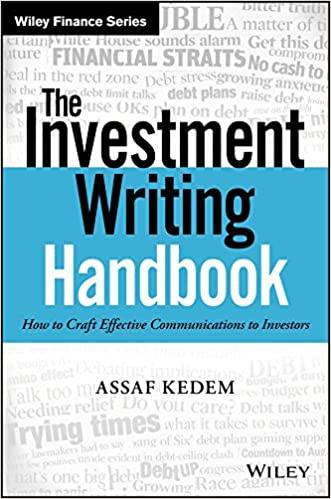

1. If an investor buys a 1-year bond for $2000 and the bond pays an annual coupon of 8% with a face value of $1000, what will be the expected annual rate of return? (Please show your work) 1080/10001100 2. If an investor buys a 1 -year bond for $1050 and the bond pays an annual coupon of 10% with a face value of $1000, what will be the expected annual rate of return? (Please show your work.) 11551050/ 3. If an investor buys a 1-year bond for $1025 and the bond pays an annual coupon of 5% with a face value of $1000, what will be the expected annual rate of return? (Please show your work.) 4. If an investor buys a 1-year bond for $1075 and the bond pays an annual coupon of 7% with a face value of $1000, whit will be the expected annual rate of return? (Please show your work.) Two Year Problems 5. If an investor buys a 2 year bond for $1000 and the bond pays an annual coupon of 8% with a face. value of $1000, what will be the expected annual rate of return if you reinvest your coupon payments at 5% ? (Assume simple interest payments annually and all money was withdrawn at the end of the bond perlod.) (Please show your work.) 6. If an investor buys a 2-year bond for $1050 and the bond pays an annual coupon of 10% with a face value of $1000, what will be the expected annual rate of return if you reinvest your coupon payments at 5% ? (Assume simple interest payments annually and all money was withdrawn at the end of the bond period.) (Please show your work.) 7. If an investor buys a 2-year bond for $1050 and the bond pays an biannus (two interest payments per vear) coupon of 5% with a face value of $1000, what will be the expected annual rate of return if you don't felinvest any coupon pryments? (Please show your work) 8. If an investor buys a 2 -year bond for $1075 and the bond pays an blannual (two interest payments per year) coupon of 5% with a face value of $1000, what will be the expected annual rate of return if you reinyest your coupon payments at SW? (Assume simple interest payments annualy and all money was withdrawn at the end of the bond period.) (Please show your work.) 9. If an investor buys a 2-year bond for $1100 and the bond pays a quarterly coupon of 4% with a face value of $1000, what will be the expected annual rate of return if you don't reinvest any coupon payments? (Please thow your work.) 10. If an investor buys a 2-year bond for $1100 and the bond pays a quarterly coupon of 4% with a face value of $1000, what will be the expected annual rate of return if you reinvest your coupon payments at 3% ? (Assume simple interest payments annually and all money was withdrawn at the end of the bond period.) (Please show your work.) Example for 2 -year problems with reinvestments of interest payments on the bond: If an investor buys a 2 -year bond for $1050 and the bond pays an biannual (two interest payments per year) coupon of 5% with a face value of $1000, what will be the expected annual rate of return if you reinvest your coupon payments at 5% ? (Assume simple interest payments annually and all money was withdrawn at the end of the bond period.) (Please show your work.) Expected Annual Rate of Return: Square Root of (Amount Received Amount Paid) -1 = Sq rt ($1,205+$1,050)1 =7.13% Notes: - The interest payment is always calculated on the face value of the bond, not what you paid for it. - Reinvestment interest is calculated on the interest payment recelved and is stated as an annual percetage rate. The above highlighted reinvestment interest corresponds to the interest payment received. So the $50 received at 6 months was reinvested at 5% annual interest, paid annually ( 5%. $50=$2.50 in interest per year). The $50 highlighted in yellow and green had one year to accumlate interest, the payment highlighted in blue did not. The total received from the reinvestment interest payments is $5.00. - When you cash in a bond at maturity, you are only paid the face value, not what you paid for it








